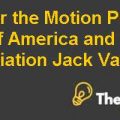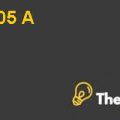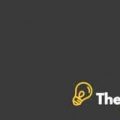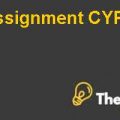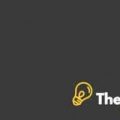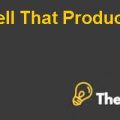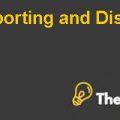How realistic are the key assumptions that underlie the bidding group’s projection in case Exhibit 8, 9 and 10? Which assumptions are most likely to have the largest impact on returns?
The average growth rate of revenue of RAC is 10% is the past but the projection just taken the 6% growth rate which is not reasonable for the calculation purposes. The reduction in growth rate will reduces the company prospects in valuation. The growth rate of revenue should be enhanced by the company is order to calculate realistic valuation.
Historic data indicates that the direct operational cost growth rates are 13% annually but in the projection the Bidding group just taken the 5% growth which is not close to reality as the company improve the operational efficiency of the company after acquisition through reducing the un justified or irrational cost and by implementation of new strategies and policies for cost reduction. (warner, 2016)
The fleet depreciation growth rate is overestimated by the company as the, although the company acquire new assets after acquisition but the investment in tangible asset does not increase the deprecation growth rate to 7% is could be between 5-6% which is realistic. Fleet interest growth assumption is also not close to reality as the company assumes at the 8%.
The historic data indicate fleet interest growth rate is 12% that show the 4% decrease which not is the case at the company. It could be higher interest payment after acquisition as the group avails the debt opportunities which are low cost financing. In addition to this for the equipment rental segment the group incorrectly takes the assumption of revenue growth again.
The historic data indicate the compound annual growth rate of 8% for the revenue of equipment segment but the group just incorporate the 6% growth rate for future years. This assumption is not close to reality as the group has better ideas for revenue generation and the industry has good demand as well.
The new strategies such as increase in length of rental increase the overall segments revenue. The company under estimated the growth rates for projection. However the direct operation expense is realistic but the company recognized the fleet interest in the projected income statement for future years.
The fleet deprecation indicates the-7% growth in the past but the company assumes the 6% positive growth rate for future projection. This assumption is close to reality as the old asset are close for retirement and the company acquire new asset for future years after acquisition by the group. (WARNELID, 2015)
Overall the net income of the whole company growth rate is quite reasonable and the assumption of the tax rate of 36% is also close to the truth. The most likely assumption which has the greatest impact on the return for shareholders is the reduced growth rate of revenue as the revenue reduces the net income of the company.
And the lower net income results in lower free cash flows which in turn in less valuation for the company. In free cash flow projection the company assumes the average growth rate of 28% which is not the case but the assumption should be based on historic data that is the growth rate of the net income is 40%.
Based on the base case estimates in case Exhibits 8,9, and 10 and your estimates of the terminal value if the sponsors put up $2.3 billion in equity, what return can they expect to earn?
The group assumes the lower growth rate in revenue which reduces the return for the shareholders. Based on the base case estimate in case of exhibit 8, 9 and 10 and with calculate terminal growth rate the return for the shareholders are stated at 18.8% which is quite. The terminal growth rate is calculated on the bases of estimates provided in case and the last year project earning. However the returns are based on historic data and assumptions therefore the results are indicative rather than conclusive.
If Carlyle desires a 20% target return on its equity investment, does your analysis suggest that $2.3 billion is too much to pay, or can it afford to pay more in either case, by how much?
As the Carlyle desires for 20% return on investment, as per analysis the suggested $2.3 billion are enough for the return of 20% because the return on investment is heavily based on operating cost savings and revenue incremental changes. The new strategies and policies given by the group to enhance revenue, so that the higher upfront equity investment does not impact on the return generated for the company and for the shareholders. Therefore the company has to provide reasonable equity investment that generates the acceptable return for the shareholders.
Conclusion:
The dual track process is adopted by the ford to sell the hertz corp. The new strategies such as increase in length of rental increase the overall segments revenue. The company under estimated the growth rates for projection. However the direct operation expense is realistic but the company recognized the fleet interest in the projected income statement for future years.
The better industry knowledge and adaptability skills of the management teams become the teams competitive in market place. The steady cash flow and predictable cash flows raises the chances to ease in repayment of debt principle as well as interest payment. The company has strong tangible asset which attract the debt finance as those assets had good second hand market for the bank or lenders.
This plan would then give company a base bid that would be either equivalent to or more than the amount of what might be in theory obtained from an IPO. The new plan makes the bidding process more difficult for the company because the company has to gathered more information and data to execute that process or strategy......
This is just a sample partical work. Please place the order on the website to get your own originally done case solution.

